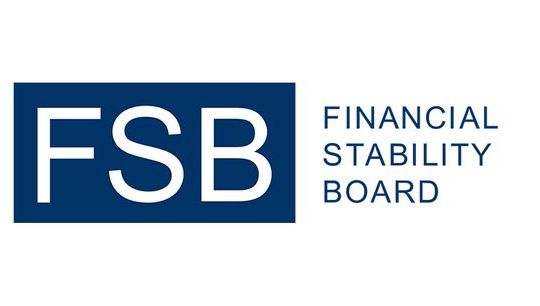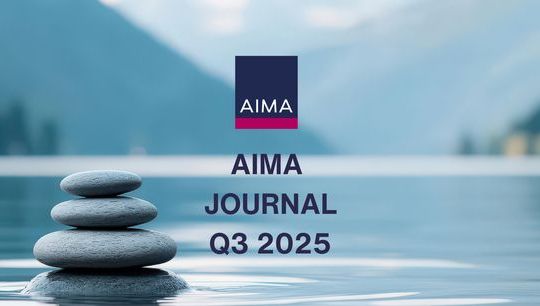Risk factor analysis and passive investment: The implications for both managers and investors
By Bill Saltus, Director, Business Consulting, Wells Fargo Prime Services
Published: 21 January 2018
For more than forty years, investment managers have sought to deconstruct their portfolios’ risks and returns into a set of common factors. More recently, in the first quarter of 2016, the factor movement was reinvigorated when the price of West Texas Intermediate crude oil dropped over 50% from the prior summer to below $30 per barrel[1]. Based on our conversations during that timeframe, we found that some hedge fund managers’ portfolios were moving lower in tandem to this “oil factor” – even if their holdings didn’t include energy stocks. This left investors asking portfolio managers for the correlations within their portfolios to oil and other factors. Current market events, combined with the proliferation of passive products based on factor indexes, brought to the forefront the increasing importance of investment managers understanding how the investor community may be viewing their overall exposures from a risk factors perspective.
This shift in perspective may have contributed to passive products growing to $12 trillion[2], fueled in part by investors who seem to be replacing beta-hugging asset managers with cheaper mutual funds or exchange-traded funds (ETFs). With this backdrop in mind, it has become more important than ever for active asset managers to understand whether the sources of their returns are idiosyncratic or factor-based. This may be achievable with the assistance of a variety of software providers, who can compare the return streams of a manager’s portfolio to those of published factors. The closer the manager’s returns mirror those of various factors, the easier it may be for an investor to achieve the same results by buying low-priced factor index-based ETFs. Providers such as Vanguard, BlackRock, and State Street, who dominate the market with an 82% share,[3] will license indexes from well-known providers, including Standard & Poor’s or MSCI, and then will manufacture passive product based on these indexes. “There are now $213 billion in assets benchmarked to our factor indexes,” indicates Peter Zangari, Global Head of Research and Product Development at MSCI, a leading research-based index and analytics provider.
MSCI provides standard factor classification and analytics tools that help investors capture exposures to different equity risk premia across a stable of factors including value, size, momentum, quality, yield, and volatility.[4] Based on ideas put forth in a paper by Eugene Fama and Kenneth French of the University of Chicago Booth School of Business in 1992[5], which explored how three factors (market risk, company size, and book-to-market equity) contribute to equity risk and return, the modern application of a broader array of factors can be achieved through tools from other firms as well, including BlackRock Solutions’ Aladdin, Kiski’s Jasmine, Bloomberg’s PORT, and Axioma’s Risk. These tools calculate how each stock is exposed to a number of factors. Using data on individual stock returns, the return attributed to each factor can then be calculated using regression techniques. With information on the holdings of a portfolio, one can calculate the portfolio’s exposure to each factor. Combining the portfolio factor exposures with the factor returns from the regression then enables one to determine the contribution each factor made to the portfolio return. The stocks with the highest scores, or exposures, on a given factor, such as dividend yield could also be assembled into an index or basket. The factor exposure and return of this index could be compared to any other portfolio or fund that described its strategy as seeking high dividend paying stocks, for example.
Though the development of these techniques began in academia, the adoption of risk factor analysis began with pensions. Fredrik Martinsson, Chief Investment Officer of Kiski Group and former CIO of Investments at ATP, the Danish Labour Market Supplementary Pension Fund, developed and implemented ATP’s proprietary Alternative Risk Premia program.[6] He notes that “while the pension industry is in a current state of ‘factor mania’, it is important to segment the world in a way that makes sense.” He continues, “It is not a ‘more-is-better’ approach with factors, but rather it is a question of ‘which ones are more valuable’”. Once the most useful factors have been determined, it becomes a question of what the institutional investor should do about these exposures. Armed with this information, the investment committee of a pension or another institutional investor will look to act in a handful of ways. If there is a trading desk within the pension, they may trade around those factor exposures in order to hedge unintended risks. Since only the largest investors will have internal capabilities, most others will look to hedge these risks through either manager selection, passive index exposures, or a combination of both. Furthermore, they may look to replace existing active managers with either a custom solution or a basket of index exposures if, as stated earlier, they believe their portfolio managers are simply charging active management fees for various forms of beta.
“Investors want to ensure that they’re not paying alpha rates for factor-related beta,” states Charles Millard, Head of Institutional Relationships at Kiski Group, and former Director of the U.S. Pension Benefit Guaranty Corp. under President George W. Bush. Once a manager understands their exposures, they may want to augment a factor, or offset an unintended exposure. Using one of the aforementioned risk factor analysis tools, they can optimize their portfolio by performing “what-if” scenario analysis, bringing their exposures closer to the desired level. “Clients will come in to us with a list of names, and we’ll look to execute that as a custom basket off of our delta one trading desk,” explains Lance Meyerowich, Managing Director at Wells Fargo Securities. In so doing, hedge fund managers can leverage their brokerage relationships for tailored investment baskets that help them complete their desired portfolio exposure targets.
Given this evolving investment landscape, hedge fund managers are arguably better positioned than traditional asset managers. With access to and knowledge of these advanced hedging techniques, hedge funds may be able to provide a higher value – and potentially charge higher fees for true alpha generation – to their institutional investor clients, who are increasingly conscious of over-paying for beta. And when considering the abundance of cheap beta that can be had through a variety of passively-managed ETFs, the institutional investor has more options than ever before in terms of portfolio allocation. A better understanding of this factor-based investing landscape will arm both the manager and the investor with the knowledge necessary to navigate the way forward.
To contact the author:
Bill Saltus, Director, Business Consulting at Wells Fargo: [email protected]
Footnotes:
[1] http://www.macrotrends.net/1369/crude-oil-price-history-chart
[2] BCG Global Asset Management 2017 Report: The Innovator’s Advantage (p. 10)
[3] https://www.forbes.com/sites/greatspeculations/2017/08/24/five-largest-etf-providers-manage-almost-90-of-the-3-trillion-u-s-etf-industry/#627138073ead
[4] https://www.msci.com/documents/10199/71b6daf5-9e76-45ff-9f62-dc2fcd8f2721
[5] https://faculty.fuqua.duke.edu/~charvey/Teaching/IntesaBci_2001/FF_Common_risk.pdf
[6] https://www.kiskigroup.com/bios
WFPS Business Consulting Disclaimer
This document and any other materials accompanying this document (collectively, the “Materials”) are provided for general informational purposes. By accepting any Materials, the recipient thereof acknowledges and agrees to the matters set forth below in this notice.
The Materials are not an offer to sell, or a solicitation of an offer to buy, the securities or instruments named or described herein.
The Materials are not intended to provide, and must not be relied on for, accounting, legal, regulatory, tax, business, financial or related advice or investment recommendations. No person providing any Materials is acting as fiduciary or advisor with respect to the Materials. You must consult with your own advisors as to the legal, regulatory, tax, business, financial, investment and other aspects of the Materials.
Wells Fargo Securities LLC makes no representation or warranty (expresses or implied) regarding the adequacy, accuracy or completeness of any information in the Materials. Information in the Materials is preliminary and is not intended to be complete, and such information is qualified in its entirety. Any opinions or estimates contained in the Materials represent the judgment of Wells Fargo Securities at this time, and are subject to change without notice. Interested parties are advised to contact Wells Fargo Securities for more information.
Notwithstanding anything to the contrary contained in the Materials, all persons may disclose to any and all persons, without limitations of any kind, the U.S. or Canadian federal, state, provincial or local tax treatment or tax structure of any transaction, any fact that may be relevant to understanding the U.S. or Canadian federal, state, provincial or local tax treatment or tax structure of any transaction, and all materials of any kind (including opinions or other tax analyses) relating to such U.S. or Canadian federal, state, provincial or local tax treatment or tax structure, other than the name of the parties or any other person named herein, or information that would permit identification of the parties or such other persons, and any pricing terms or nonpublic business or financial information that is unrelated to the U.S. or Canadian federal, state, provincial or local tax treatment or tax structure of the transaction to the taxpayer and is not relevant to understanding the U.S. or Canadian federal, state, provincial or local tax treatment or tax structure of the transaction to the taxpayer.
Any securities or instruments described in these Materials are not deposits or savings accounts of Wells Fargo Bank, National Association and are not insured by Federal Deposit Insurance Corporation, Canada Deposit Insurance Corporation or any other governmental agency or instrumentality.
US IRS Circular 230 Disclosure:
To ensure compliance with requirements imposed by the IRS, we inform you that any tax advice contained in the Materials is not intended or written to be used, and cannot be used, for the purpose of (i) avoiding tax penalties or (ii) promoting, marketing or recommending to another party any transaction or matter addressed herein.
©2017 Wells Fargo. All Rights Reserved.
Wells Fargo Securities is the trade name for the capital markets and investment banking services of Wells Fargo & Company and its subsidiaries, including but not limited to Wells Fargo Securities, LLC, a member of NYSE, FINRA, NFA and SIPC, Wells Fargo Prime Services, LLC, a member of FINRA, NFA and SIPC, and Wells Fargo Bank, N.A. Wells Fargo Securities, LLC and Wells Fargo Prime Services, LLC are distinct entities from affiliated banks and thrifts.







